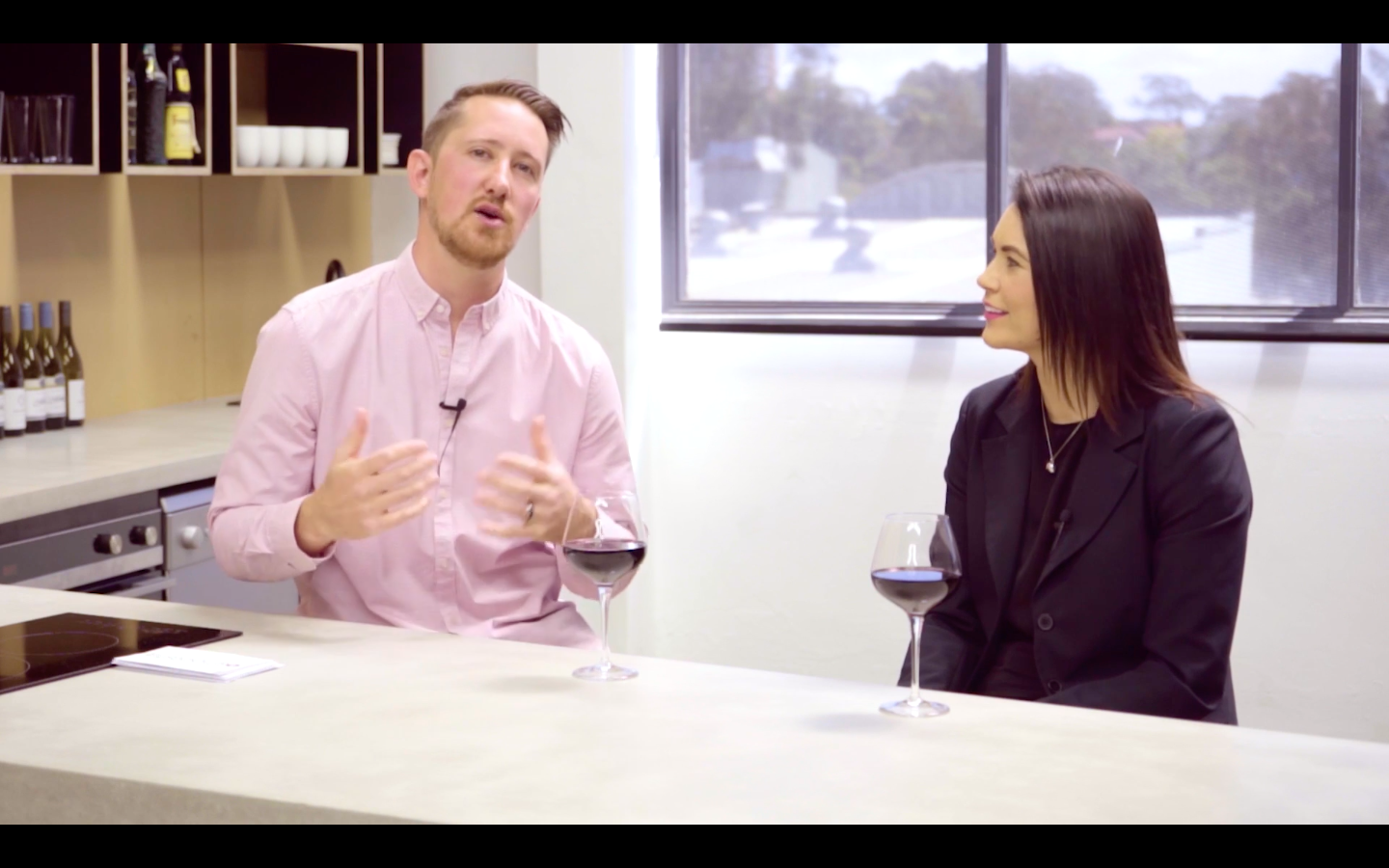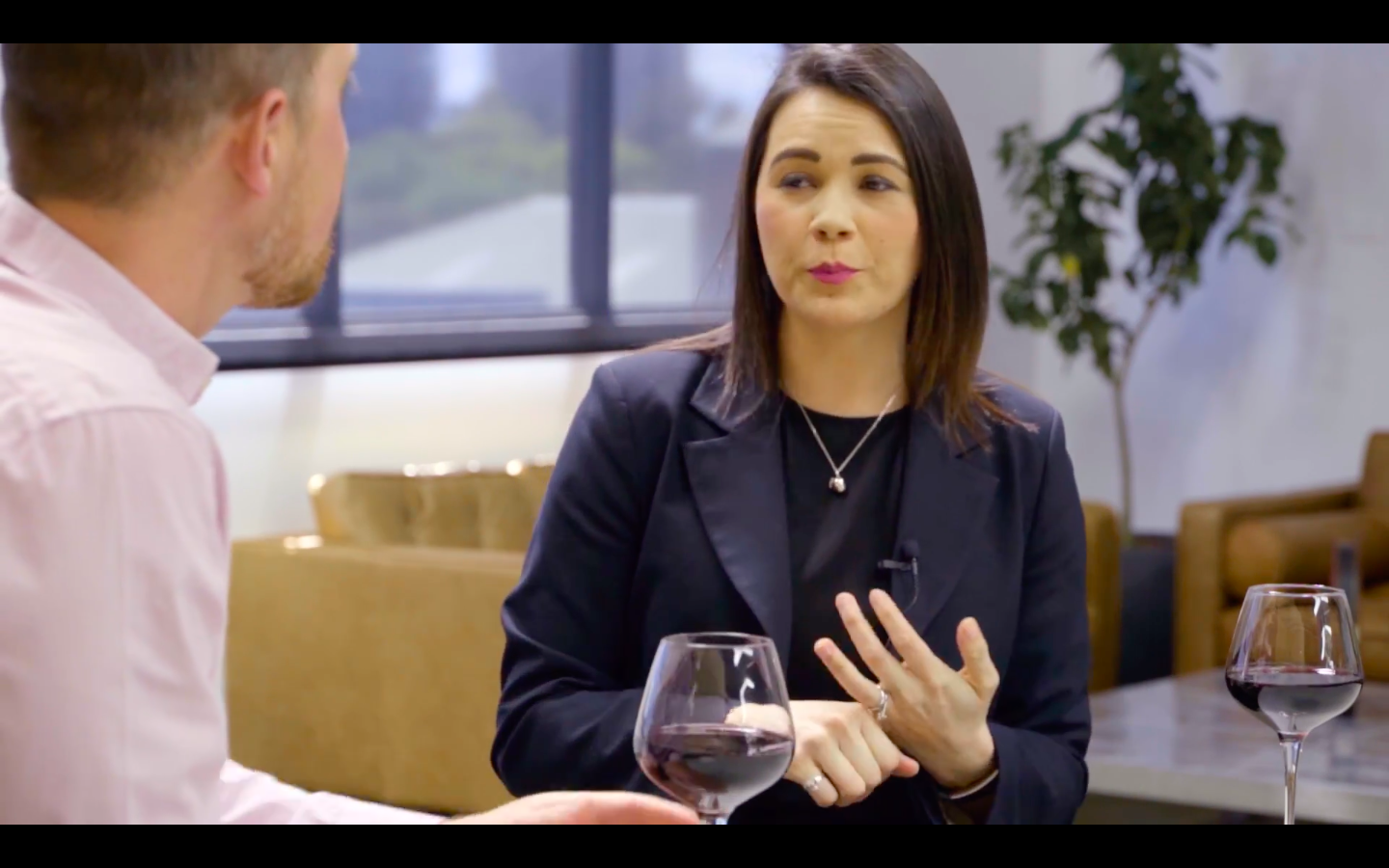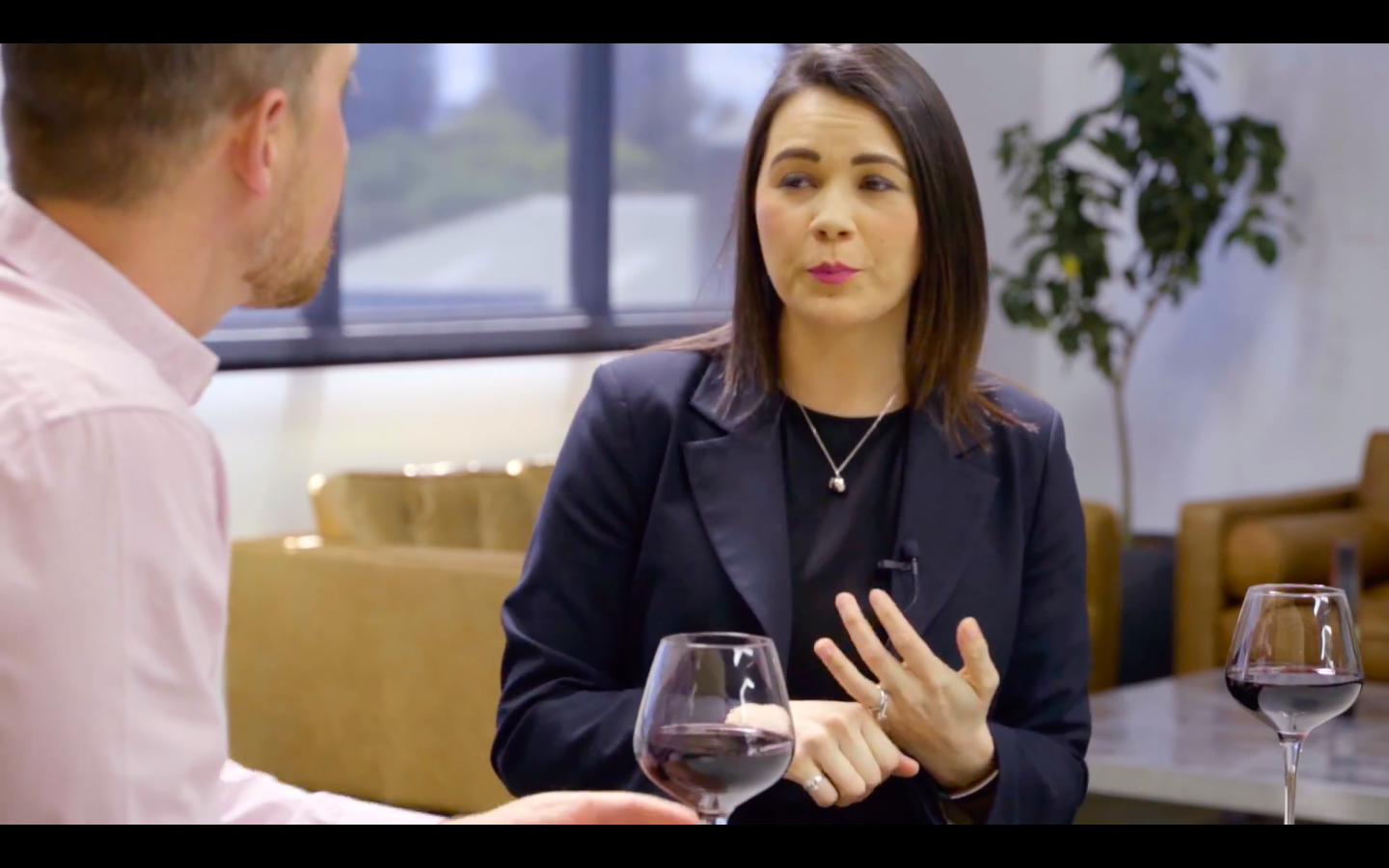Variants of the 2-person video interview:
-
Host + guest expert videos
-
Thought leadership videos
-
Get to know videos
-
Behind-the-scenes videos
-
Business updates
Here's a great example of a 2-person interview made by Shootsta:
-
Set up the camera and the shot following the 7 steps to film on the Shootsta Kit. For this type of video you won’t need the autocue. You will need the audio splitter to plug in two microphones.
-
Position your host on the left in the shot.
-
Position your guest on the right in the shot, next to the host.
-
Reduce the height difference between the host and the guest by having them to sit or by “lifting” the shortest person to sit or stand on something.
-
Get them close. Have your host and your guest sit or stand quite close to each other, angled in towards the camera. When standing shoulders should almost touch, when sitting knees should almost touch. A wide separation doesn’t look great on camera.
2 camera angle set-up
There are two ways to create the 2 camera angle look:
Using 2 cameras: capturing 2 angles at the same time
Camera 1: a wide shot of both the host and the guest

Camera 2: a close up of your guest, over the shoulder of the host

Using 1 camera: capturing angle by angle
Step 1: record all guest’s answers in a close-up, over the shoulder of the host. Allow the interview to play out as normal, have the host to ask the questions and not to speak while the guest is talking.

Step 2: record all the host’s questions and reactions in a close-up, over the shoulder of the guest. Allow the interview to play out as normal, have the host to ask the questions and to listen and nod while the guest gives a brief reply of what they said earlier. These “noddies” of active listening can be used in editing to cut back to the host from the guest to make it feel like a naturally-flowing conversation.
Step 3: record introduction and conclusion in a mid-shot of both the host and guest front on. This includes the first and last question of the interview.

Make sure not to break the 180 Degree Rule. This means that if one camera is positioned on the left hand side of your interviewee's gaze, keep the second camera angle also on the same side. That way your interviewee will always appear on screen facing the same direction in both shots.

Directing a 2-person interview
Partner up
For best results, give the content of the interview your full attention during the shoot. If you’re filming and directing at the same time, you likely won’t spot both technical issues (e.g. the subject going out of focus) and content issues (e.g. incorrect product name). So partner up to film a 2-person interview by having:
-
Camera Operator
-
Director
What to direct
A 2-person interview is a conversation between the host and the guest. For a naturally flowing conversation, you want to limit the amount of interruptions to give directions. To get the best answers from your host and guest guide them on
-
The structure of your interview and what order you’ll be filming it in.
-
Where to sit/stand: host on the left, guest on the right, close enough so there is no big gap in between them.
-
Where to look: The host either directly into the camera when addressing the audience and at the guest when addressing the guest. The guest looks at the host for the most part of the shoot. The guest can look at the camera when the host is address the audience but doesn't address the audience directly themselves.
Tips for the host
As the host, make sure you ask the guest questions clearly and concisely. Script and memorise your most important questions and allow for some unscripted follow-up questions. Your body language and tone of voice are important; the host must appear genuinely interested in what the guest has to say.
Tips for the guest
The guest’s answers should be unscripted, but allow them to order their thoughts by sending them the questions and any talking points in advance. Plan how long you would like each answer to be. As the director, don’t hesitate to do another take, asking the guest to repeat their answer in a different way, focusing on one element of their answer, or giving a general overview if their initial answer is too long.
Have questions or need help? Get in touch. We’d love to help!
